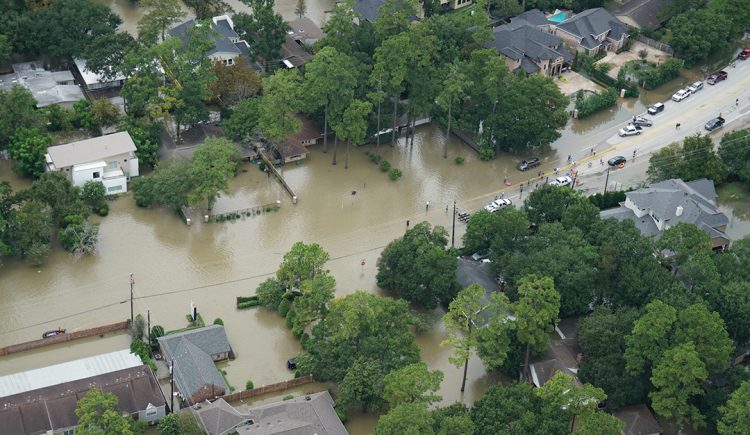Floods are the most common and costly natural disaster in the U.S. and a growing problem that is not limited to FEMA’s designated high-risk areas. New simulations use high-resolution topographic maps and advanced modeling techniques to reveal a more detailed and comprehensive flood risk assessment.
For example, researchers at the First Street Foundation found that 14.6 million U.S. homes are at high risk of flooding. That equals roughly 15% of all residential properties and 6 million more homes than previously estimated by FEMA.
Further, flooding is not limited to coastlines or interior waterways. Heavy rainfalls can cause extensive damage in urban areas when rainwater runoff overwhelms sewer and stormwater systems. Frozen ground and paved surfaces exacerbate the problem.
Increasingly, homebuyers worry about purchasing a home that might flood—and the risk of rising premiums for flood insurance. What steps should managing brokers take to address buyers’ concerns and guard their brokerage from the risk of legal liability or other adverse actions?
Encourage your agents to take these steps to help buyers make informed purchase decisions and to protect themselves.
Know your role. Buyer’s agents need to meet all their legal and professional obligations without overstepping their boundaries and acting like flood risk experts. Know your state’s disclosure laws concerning flooding. And remember that the REALTOR® Code of Ethics requires disclosure of any reasonably apparent adverse facts, such as flood damage.
Be responsive. If a buyer is concerned about flooding, encourage them to do their due diligence and be ready to supply the best authoritative resources, including local experts like your floodplain manager, surveyors, engineers and inspectors with flood expertise.
Also, point buyers to valuable resources from credible sources. The National Association of REALTORS® (NAR) has compiled an extensive list at www.nar.realtor/flood-insurance.
Get familiar with Flood Factor™. Buyers searching for properties on realtor.com® may ask you about Flood Factor™, a new flood risk visualization tool developed by the First Street Foundation, which behaves similarly to other realtor.com® mapping filters like schools, noise and crime. The tool also displays FEMA’s flood risk score.
Lean on RPR®. Did you know that the latest FEMA flood maps are also built into Realtors Property Resource® (RPR®)? Flood zone mapping layers are offered in RPR®’ s residential and commercial platforms.
Embrace transparency and build trust. Flooding is a somber concern, and the risk of litigation and damaged reputations must be taken seriously. Real estate professionals should not shy away from helping buyers understand risks, explore mitigation options and make informed purchase decisions.
Proactively serving as a flooding resource is the best way to build trust and earn more business.
 Marc D. Gould is senior vice president of Member Development for NAR, overseeing a wide range of professional development programs for REALTORS®, including the Real Estate Buyer’s Agent Council (REBAC). REBAC is the world’s largest association of real estate professionals focusing specifically on representing the real estate buyer. With more than 27,000 active members, REBAC awards the Accredited Buyer’s Representative (ABR®) designation to REALTORS® who have completed the specialized education and documented experience in working with consumers purchasing a home. To learn more, visit REBAC.net.
Marc D. Gould is senior vice president of Member Development for NAR, overseeing a wide range of professional development programs for REALTORS®, including the Real Estate Buyer’s Agent Council (REBAC). REBAC is the world’s largest association of real estate professionals focusing specifically on representing the real estate buyer. With more than 27,000 active members, REBAC awards the Accredited Buyer’s Representative (ABR®) designation to REALTORS® who have completed the specialized education and documented experience in working with consumers purchasing a home. To learn more, visit REBAC.net.











